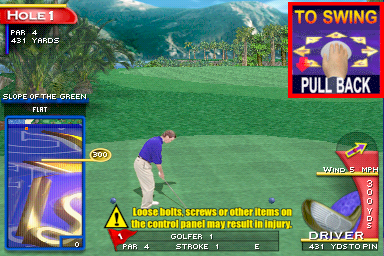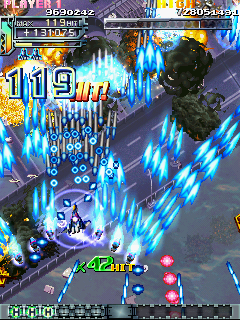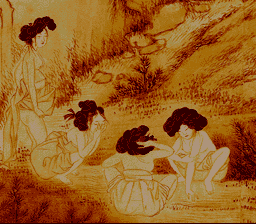
UME is the complete/combined version of the MAME / MESS project.
Official whatsnew texts for (MAME, MESS) provide full details of what has changed since 0.160.
This is based on the official ‘mame0161’ tagged version at GitHub.
UME 0.161 Windows binaries – 32-bit, 64-bit and all tools
(source matches official mamedev.org source distribution, here for completeness)
Other Binaries (if you don’t know what these are you don’t need them)
MAME/MESS split 0.161 Windows binaries – 32-bit, 64-bit and all tools
Windows SDL builds
The regular Windows build of MAME now has an OpenGL video mode, if you’re having BSOD issues with nVidia hardware on XP try that instead of DirectDraw, it should be more compatible with existing frontends etc. than the SDL builds were. I may reassess the situation later however because I’ve found the opengl output in regular MAME to have some drawbacks, it appears to be locked to vsync causing unwanted slowdown, especially on older hardware.
However, I’ve found, at least on my older hardware that the OpenGl renderer in the baseline build doesn’t perform as well as SDLMAME, so if you’re on older nVidia/XP hardware, or using integrated Intel graphical and getting corrupt graphics you might still prefer to use the SDL builds.
SDL MAME/MESS/UME 0.161 32-bit Windows builds
SDL MAME/MESS/UME 0.161 64-bit Windows builds
Experimental binaries
MAME / MESS / UME 0.161 64-bit Windows builds, compiled using CLANG (windows_x64_clang option)
Notes
I skipped 0.160 due to lack of time. I’ve upgraded my hardware since then cutting compile times from over an hour to around 7 mins. 0.161 also brings a brand new genie based build system, so there could still be some teething issues.
Points of Interest
The main thing of interest over the last 2 months comes in the form of the emulation progress made with the old handheld games, most of these are MCU based, so simply seeing somebody dumping them is an achievement, and beyond that the work required to create artwork etc. means that the number of them we see marked as working in this release is phenomenal. Some screenshots of these running were uploaded here. Most of these require external artwork to be functional, the current artwork being used can be found here.
Ted Green’s improvements to the driver for the more recent Golden Tee games continue to be a revelation, many of them boot and can actually be played to a degree, although there are still graphical issues (of note the map display on the bottom left) and no sound. They also require a pretty beefy machine but do actually hover around 100% on my new setup (faster when unthrottled but a bit uneven when throttled as the CPU load for each individual frame varies quite a lot) Interestingly the version we have marked as ‘Golden Tee Fore 2002’ actually shows 2003, I’m not sure if that means we’re missing a real 2002 set?
*edit* they have sound, some of them just have the volume set to 0 by default, it can be adjusted in service mode. We’re definitely missing images of Golden Tee Fore! and Golden Tee Fore! 2002, all the images we have are upgraded ones (it adds an extra partition to the drive each time you upgrade, unfortunately deleting the extra partitions doesn’t reverse the process as other data is changed too)












Work was also done on the Sega ‘Spider’ system, which is really just a revised Naomi platform (not actually compatible with Naomi) which Sega used mainly for Medal style games, and some novelty products. Tetris Giant was one such release, it boots to a title screen but hangs shortly after before showing any gameplay.


A host of fixes to the GBA driver in the MESS part of the code significantly improved compatibility there.
In addition to the very rare French version of Berzerk I mentioned in an earlier update the Spanish version was also dumped thanks to Bartolomé López Giménez and Ricky2001. The Spanish version was licensed to ‘Sonic’ (or at the very least they made the cabinet and modified the game code to show ‘Sonic’) Interestingly it has far less speech than the other versions, choosing to reuse a much smaller selection of speech clips more frequently; I can only assume budget constraints.
Of course the things I’ve covered here already were also included; Table Tennis Champions, Car Hunt, Ma Cheon Ru etc.
DoDonPachi Dai-Fukkatsu Black Label was also added, although like all the SH3 based Cave titles it lacks emulation of the hardware limits so much of the slowdown is missing resulting in a much more difficult game. I’m starting to wonder if we shouldn’t just mark them as NOT WORKING until it can be emulated properly, it can be game breaking in places. For those not in the know the ‘Black Label’ version of this game is significantly reworked from the original releases and even includes a brand new soundtrack.



The Medal games Luca showed on his page are also supported.
The hard work of Couriersud and the DICE authors means that BreakOut becomes the 2nd major discrete game to show promise, it’s not yet marked as working, but can actually be played in it’s current state, runs at 60-70% speed on a 4ghz i7 tho, so be warned, it isn’t quick!

All in all it’s a ‘bit of everything’ release; I even had to dig out the old CPS2 key-finder for the new Super Puzzle Fighter 2 clone (parent)

































